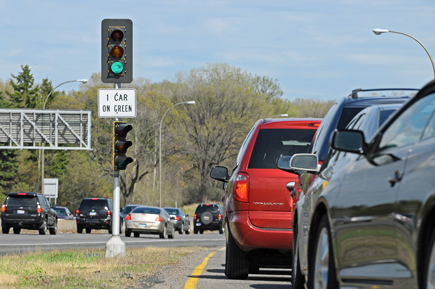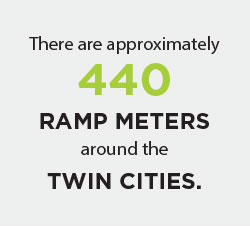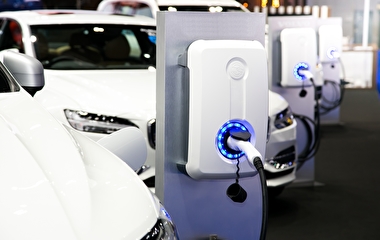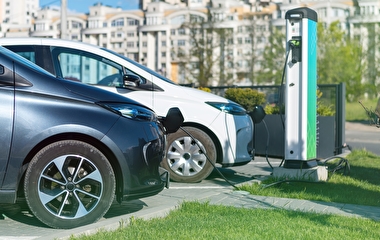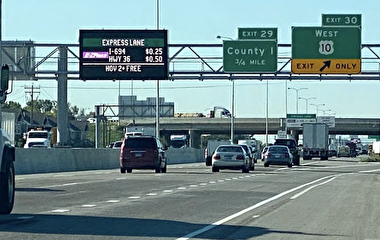Motorists are experiencing less delay on metro-area highways thanks to major changes to the Twin Cities’ ramp-metering system.
The Minnesota Department of Transportation (MnDOT) has reconfigured ramp meters to be more in sync with real traffic conditions. Meters are now running for shorter periods of time and are activated only when needed.
According to MnDOT, the system is operating better because of changes implemented approximately one year ago based on results of a 2012 MnDOT-sponsored study by U of M researchers.
Led by Eil Kwon, a professor of civil engineering at the University of Minnesota Duluth, the study included the development of new software algorithms for the ramp-metering system. Under the old system, the criteria for ramp meters to turn on were easily met, causing them to turn on too soon. In addition, the old system had no turn-off criteria; once activated, the meters would run until a pre-set time of day.
The system upgrade included improvements to the turn-on criteria, so meters come on only when needed. In addition, turn-off criteria were added, allowing meters to shut off when traffic conditions improve. As a result, the new metering system is particularly effective at reducing the number of meters operating on light traffic days.
“On days like the ones leading up to Thanksgiving, where traffic may be 10 to 15 percent less than normal, instead of, say, 150 ramp meters being on at a particular time, now maybe only 50 ramp meters will be operating,” explains MnDOT freeway system operations engineer Jesse Larson.
The upgraded ramp-metering system also allows for a better picture of what traffic is like at a given moment, because it’s now based on corridor density rather than traffic flow.
Using traffic flow—the number of vehicles passing a given point—was flawed because similar traffic flows can occur at different speeds. For example, the old system couldn’t differentiate between 1,000 cars passing by at 20 miles per hour versus 60 miles per hour. Corridor density, on the other hand, is the number of vehicles per lane per mile. By measuring density instead of traffic flow, the system can more accurately detect current conditions on the freeway.
Another benefit: ramp meters no longer release a group of cars simultaneously once an entrance ramp fills up. The system can now detect the ramp filling up and releases the extra cars gradually instead.
Following the implementation of the new system, a U of M team led by Kwon conducted a case study of Highway 100 to evaluate the benefits of the upgrade. Results show that the delay on the mainline dropped by nearly half after the metering changes were implemented.
On northbound Highway 100, the amount of “delayed vehicle hours”—vehicle hours of traffic flow with speeds less than 45 mph—that motorists experienced dropped 48 percent during October and November of 2012 (compared to the same period in 2011). During that time, total volume on that section of northbound Highway 100 increased by 2.7 percent, Kwon says. In spring 2013, the amount of delayed vehicle hours had been reduced by 17 percent.
These results are preliminary, and additional analysis is needed to determine if these results are typical throughout the system on other freeway corridors. However, based on a savings of $16.50 per hour per motorist, this scenario represents a total cost savings for all motorists of $1,353 to $3,447 per day (depending on the season). That’s as much as $339,150 to $861,640 per year for just a six-mile stretch of highway.
(Adapted from an article published on the joint CTS/MnDOT Crossroads blog.)
